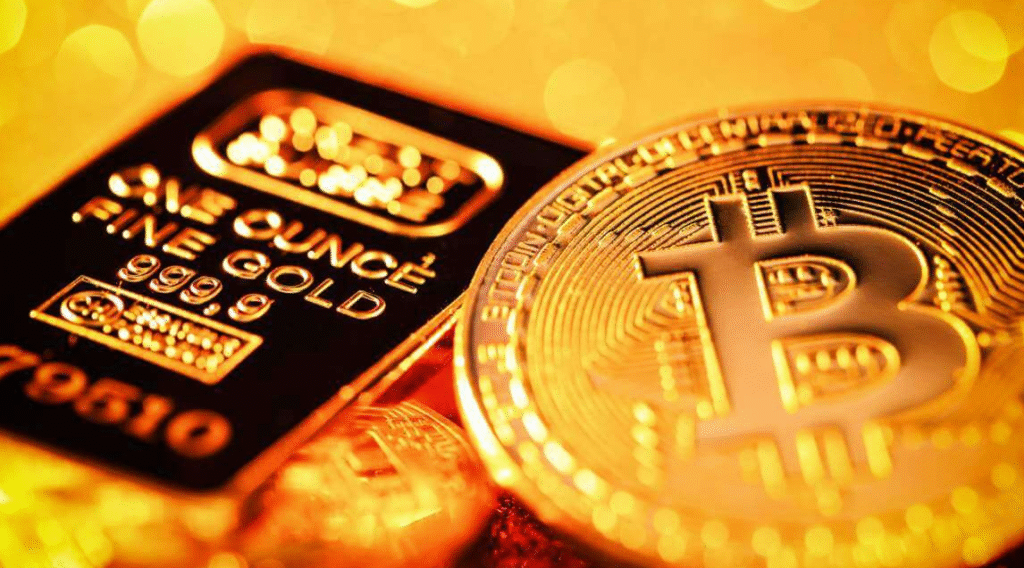The 2025 global financial trend involves central banks rapidly increasing their gold stocks. The “gold rush” among sovereign financial institutions reflects concerns about global economic stability, currency debasement, and de-dollarization. Bitcoin, the digital equivalent of gold, may profit most from gold’s revival, according to analysts. As institutional interest in digital assets grows and faith in fiat money wanes, the Bitcoin Network emerges as a future-proof repository of wealth.
Central Banks Boost Gold
The World Gold Council claims that in the first ten months of 2024, central banks accumulated more than 690 tonnes of gold, the biggest rate of gold buying on record. Driven by a mix of geopolitical and financial considerations, countries including Poland, China, India, and Turkey led the increase. For instance, Poland wants the proportion of gold in its national reserves to reach 20%. Gold prices have surged to all-time highs due in great part to this great demand; early 2025’s price is $2,902 per ounce.

Why the sudden gold rush? Rising inflation, declining faith in the U.S. dollar, and a move toward de-dollarization among developing nations are the several but linked reasons. Gold is still a classic hedge in times of uncertainty as long-term interest rates vary and world tensions rise.
Bitcoin Outpaces Gold
While gold has enjoyed a historic rally, Bitcoin has been quietly outperforming in terms of returns. Year-to-date in 2025, Bitcoin is up more than 30%, trading near $95,000 at the end of April. Though BTC experienced volatility earlier in the year, it has shown remarkable resilience compared to other risk assets.
Bitcoin’s ascent is being supported by both macroeconomic factors and internal crypto-market catalysts. The most significant among them is the expectation of a spot Bitcoin ETF approval in the U.S., which could trigger a wave of institutional investment. Furthermore, the Bitcoin halving—scheduled for later in 2025—will reduce the block reward from 6.25 to 3.125 BTC, tightening supply and historically acting as a bullish catalyst.
This parallel rise of gold and Bitcoin suggests that institutional investors are increasingly seeking inflation-resistant, non-sovereign assets to safeguard capital in a time of economic uncertainty. In many ways, Bitcoin is being treated as “digital gold,” but with additional attributes that make it attractive in a rapidly digitizing world.
Swiss Bitcoin Initiative
A political movement in Switzerland is pushing the Swiss National Bank (SNB) to distribute some of its reserves to Bitcoin due to its growing importance as a sovereign reserve asset. The constitutional vote would require the central bank to carry Bitcoin and gold to protect national wealth from fiat debasement and guarantee Swiss financial freedom.
This project indicates rising trust in Bitcoin’s long-term viability as a strategic asset and could inspire similar efforts in other nations where people and legislators are looking at substitutes to conventional monetary systems.
Bitcoin vs. Gold
Bitcoin has several advantages over gold that are increasingly difficult to ignore. It is highly portable, divisible, borderless, and verifiable on a public blockchain. Unlike gold, which must be physically stored and transported, Bitcoin can be moved in seconds across the globe. It is also provably scarce: only 21 million bitcoins will ever exist, with more than 93% already mined.
Moreover, Bitcoin operates independently of any central authority, making it immune to political interference or manipulation. These features make it uniquely suited to serve as a hedge not just against inflation but also against systemic risk, currency controls, and capital flight restrictions.
Bitcoin Price Catalysts
Several factors could push Bitcoin to new highs. The US Bitcoin ETF adoption is crucial. Spot ETFs buy Bitcoin immediately, reducing supply and increasing demand. Futures-based ETFs monitor the price indirectly. More institutional investors, like asset managers and pension funds, could simply and securely use Bitcoin. If these huge players contributed more, market dynamics may alter and prices would rise.

The approaching Bitcoin Resilience halving event, due in 2025, is another significant trigger. The issuing rate of Bitcoin is set to drop by half roughly every four years, and past significant price hikes have always followed from this decline in fresh supply. Scarcity rises when the amount of fresh bitcoins entering circulation decreases—especially if demand stays steady or rises. Past halving events in 2012, 2016, and 2020 all produced protracted bull markets in the next months. Many investors hope even more as they see a similar trend this time.
Final thoughts
As central banks buy gold, Bitcoin will benefit indirectly. As a distributed, uncommon, and increasingly approved asset, it can complement or replace gold in the digital age. Macroeconomic uncertainties, regulatory changes, and increased institutional adoption position Bitcoin to test all-time highs and maybe reinvent the global reserve asset.


